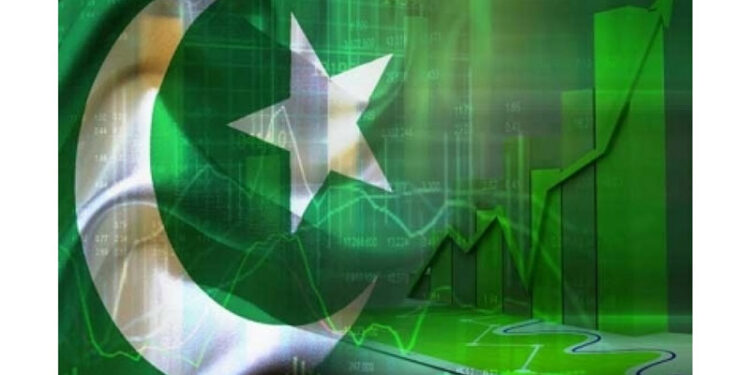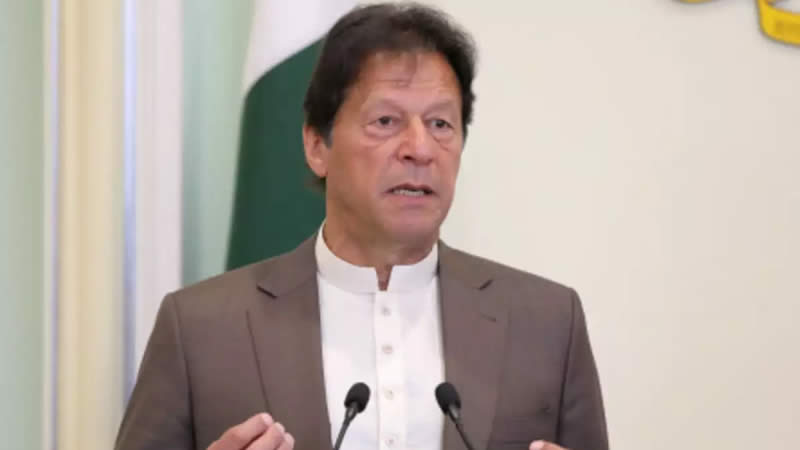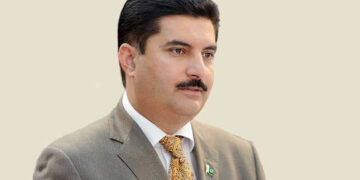ISLAMABAD: Pakistan’s economic performance continues to be strong as cyclical position was witnessed slightly above neutral and the trend growth rate of potential output remained strong, according to monthly Economic Update and Outlook for February 2022.
According to the document released by the Finance Ministry here Monday, the rebased Large Scale Manufacturing (LSM) quantum index revealed that during the first seven months of the current fiscal year, the output volume of large-scale manufacturing increased by 7.9 percent compared to the same period of last year.
The report termed it as a considerable upgrade from the increase recorded following the old base LSM index, which grew by 3.7 percent. Consequently, the overall economic growth during the first seven months of the current FY is much better.
All currently available information indicates that this economic dynamism will continue in the following months, in which case the government’s economic growth target for the whole year (around 5%) is likely to be realized, it added.
It said, the international commodity prices remained at the upper levels of their current cycles and in these circumstances, it was difficult for domestic prices to start a downward adjustment.
But if further Month on Month price increases could be contained, the Year-on-Year (YoY) inflation, which is largely a backward-looking indicator, will automatically decelerate significantly.
The high international commodity prices, together with the strong expansion of domestic economic activity kept the value of imports elevated, it added.
In the current baseline scenario, the decline in export proceeds in January was considered to be an idiosyncratic event that would not be repeated in the next months.
In this baseline scenario, the trade balance and the remittance inflows are expected to recover in the coming months. As a result, an improvement in the current account balance is foreseen, but these developments need to be closely monitored due to changing global and regional environment.
Recent geopolitical tensions, in particular the Ukraine crisis, present a considerable risk factor to the otherwise positive outlook for Pakistan’s economy.
The reported predicted that these tensions might further lift international oil and food prices, as well as other commodity prices outside and beyond their current cycles.
It said, the main question was about the potential strength and duration of this new inflationary factor. The main risk for the Pakistan economy is that these developments may further delay the downward correction in inflation and improvement in the current account balance, it added.
The report said that Pakistan’s total liquid foreign exchange reserves were recorded at $23.0billion on February 23, 2022 whereas the workers’ remittances in July-January FY2022 reached $18.0 billion compared to $ 16.5 billion last year, showing an increase of 9.1 percent.
Workers’ remittances continued their unprecedented streak of above $ 2.0 billion for the 20th consecutive month in January 2022.
Federal Board of Revenue (FBR) exceeded its revenue target by 8.5 percent during the first seven months of the current fiscal year. In absolute terms, revenue amounting to Rs3,350.8 billion was collected against the target of Rs3,089.7 billion, which is Rs261.1 billion more than the seven month target.
The collection during Jul-Jan FY2022 is also higher by Rs 779.7 billion in absolute and by 30.3 percent as compared to last year.
Meanwhile, the Consumer Price Index (CPI) inflation during July-January was recorded at 10.3 percent against 8.2 percent during the same period last year. CPI for January 2022 recorded at 12.96 percent on YoY basis against 5.65 percent same month last year.
The fiscal deficit was contained at 2.1 percent of GDP during the first half of current fiscal year while the primary balance, on the other hand, remained in surplus of Rs 81.1 billion during July-December FY2022, compared to Rs 337.2 billion in the previous year.
On external side, the Current Account posted a deficit of $ 11.6 billion for July-January FY2022 as against a surplus of $ 1.0 billion last year. Current account deficit widened due to constantly growing import volume of energy and non-energy commodities, along with a rising trend in the global prices of oil, COVID-19 vaccines, food and metals.
Exports grew by 27.4 percent during July-January FY2022 and reached $ 17.7 billion ($ 13.9 billion last year). Imports grew by 55.1 percent during July-January FY2022 and reached $ 42.8 billion ($ 27.6 billion last year). Resultantly the trade deficit (Jul-Jan FY2022) reached to $ 25.1billion as against $ 13.7 billion last year.
Meanwhile, In July-January, the Foreign Direct Investment (FDI) reached $ 1,166.6 million as compared to $ 1,048.0 million last year, showing an increase of 11.3 percent.
The KSE-100 index hovered around 45,000 in January 2022 and closed at 45,375 points on 31st January, gained 780 points in the month. Similarly, market capitalization gained Rs 71 billion in January 2022 and closed at Rs 7,756 billion.
The report said that although economic recovery was underway, the economy was also confronting with inflation and external sector pressure.
It said, the government was taking various policy, administrative and relief measures to counter the downside risks for the economy.













